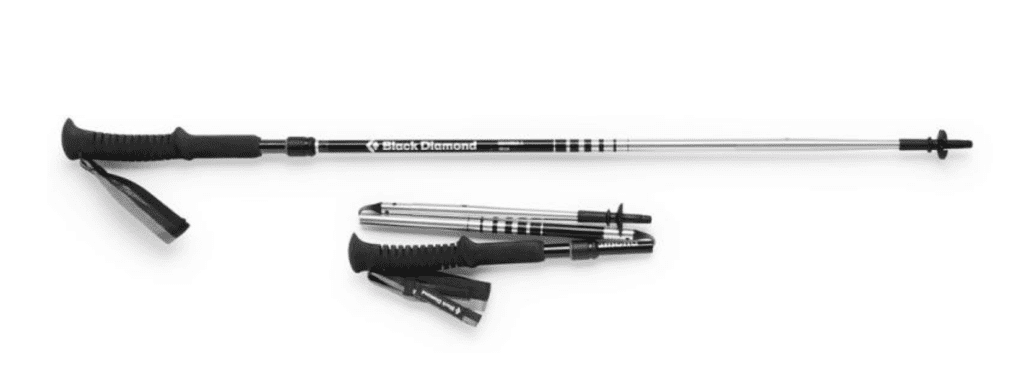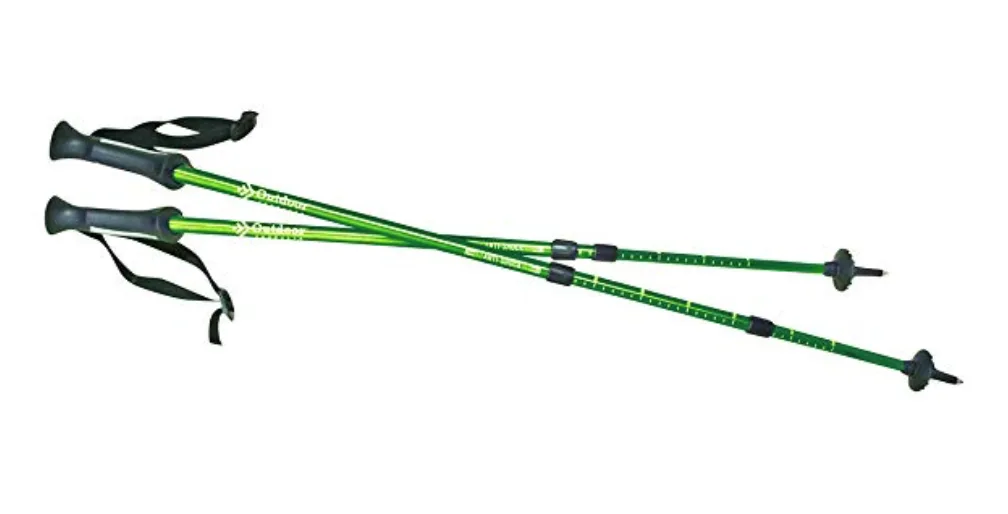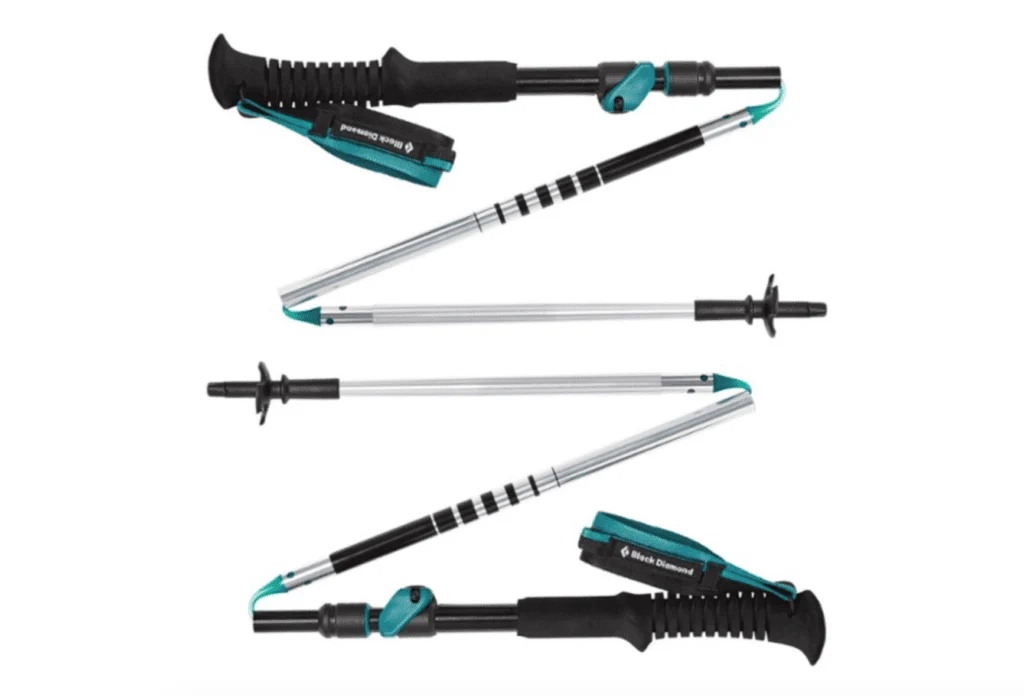REI Anniversary Sale May 16-26 - Up to 30% off plus 20% off member deals!
Watch this video directly on YouTube.
We wouldn’t think of going on an intensive hike without our trekking poles. They’re immensely beneficial during tough climbs and descents and really take the pressure off your knees. Plus, you know, keep your arms in the game so they don’t turn into limp noodles on a long hike. But trekking pole prices are all over the map. You can get a pair of cheap ones for $20 or less on Amazon, or you can spend upwards of $200+ on an ultralight model. But are expensive trekking poles worth the money? We put a few to the test. Check out our trekking pole comparison to find out.

Trekking Pole Comparison: Expensive Trekking Poles
We tried out the Black Diamond Distance Z and Black Diamond Distance FLZ to compare them to our cheap models (which cost between $15-$20 for the pair). The Black Diamonds both cost $140. They’re both made out of ultralight aluminum. The Z weighs in at a low 14 oz and the FLZ at 16 oz, give or take an ounce depending on the length. You can get even lighter poles, like the Gossamer Gear carbon fiber trekking poles (under 10 oz for the pair), but they’re gonna cost you: in the ballpark of $199 to be precise.
Do keep in mind that you may have to take extra care with carbon fiber, because if it gets gouged, it becomes significantly weaker and could snap. It would take a fair amount of damage to really compromise the integrity, of course, so there’s little to worry about, but if you do see a deep crack somewhere, you’ll want to replace the part or the whole pole.
The difference between the Z and FLZ is that the Z poles are fixed length and the FLZ are slightly variable, but you buy both in specific sizes or size ranges (for example, the Z poles we have are 130 cm and the FLZ are 125-105 cm). That said, neither of us was fond of the fixed poles for this reason: you can’t adjust them. At all. Which isn’t great because proper usage of trekking poles dictates that you should shorten them slightly when hiking up and lengthen them when going down. It makes using them more efficient and takes additional pressure off your joints. At least with the FLZ you had a bit more flexibility. Online retailers will help you figure out what length you need for your height, though.
These poles are also super compact. The Z poles fold down to 43 cm (or 17″) and the FLZ folds down to 40 cm (or 16″), meaning they can easily fit in a daypack or small carry on. That’s a lot smaller than our cheap models.

Trekking Pole Comparison: Cheap Trekking Poles
No lie: our trekking poles are from Walmart: Outdoor Products. I’m not embarrassed to say it. They were $17 for the pair. They weigh about 25 oz (1.6 lbs) and are also made of aluminum, but a heavier, sturdier variety. Much like the $30 aluminum Cascade Mountain Tech trekking poles, which weigh 20.8 ounces, are 66 cm (26″) fully collapsed and extend up to 137 cm (54″) and have 3 quick-adjust points.
The poles we’ve been using extend up to 131 cm (or 52″) and collapse down to 63 cm (25″) by means of 2 quick-release adjusters, making them adjustable for people of all heights and ups and downs in the trail.
They aren’t, obviously, as compact or light as the more expensive poles, but that really only becomes a problem if you’re flying with them and only traveling with a carry-on or maybe trekking very long distances with your pack when you would prefer to stow the poles instead of using them.

Are Expensive Trekking Poles Worth the Money: Our Take
Would we pay 4-6 times as much for trekking poles that were a bit lighter and smaller? Probably not. The expensive models did feel light in our hands, but I can’t see that making much of a difference in most situations we find ourselves in. If we traveled often with them, we might spring for slightly more expensive models that packed down smaller, but neither of us would trade adjustability–at least one quick-release is a requirement in our opinion–for weight.
Lighter poles also mean less durable poles. Trekking poles break, even the expensive ones (especially the expensive ones). We, however, have never broken a single trekking pole, though we have bent them. The lighter and thinner the material, the more likely it’s not gonna last, especially if you use and abuse your poles often or they see a lot of wear and tear, whether from bumping around in the back of a truck bed or getting dropped or knocked against rock during backpacking trips or day hikes.
Basically, until necessity requires that we obtain trekking poles that collapse down a lot smaller, we’re gonna stick to our budget models. Are expensive trekking poles worth the money? For most people in most situations, we don’t think so. Save your cash for something cooler and that will last longer. Like a new tent or hiking boots.
What do you think? Believe it’s worth it to spend the extra cash? State your case! Who knows? Maybe you can change our minds. Or let us know what trekking poles you love so we can take a look when it’s time to replace our cheapos! Wander on!
*This post contains affiliate links, which means we may receive a small percentage of the sale of items listed here at no cost to you!
•
That depends. It’s largely a matter of preference, but if you’re planning to hike on trails with a significant amount of elevation gain (or loss), they’re very handy when it comes to preserving your legs and knees.
Generally speaking, ultralight trekking poles make the most sense for ultralight hikers and backpackers. If that’s not you, your money would likely be spent better elsewhere on gear where you get a bigger return on your investment.
That will depend on how often you use them and how you abuse them. If you baby your gear or use them sporadically, they should last for years barring any unforeseen incidents. However, poles that see frequent use, are often tossed, dropped, and otherwise abused, or that end up being utilized to catch a fall or push you up will have a shorter lifespan no matter what material they’re made of.
